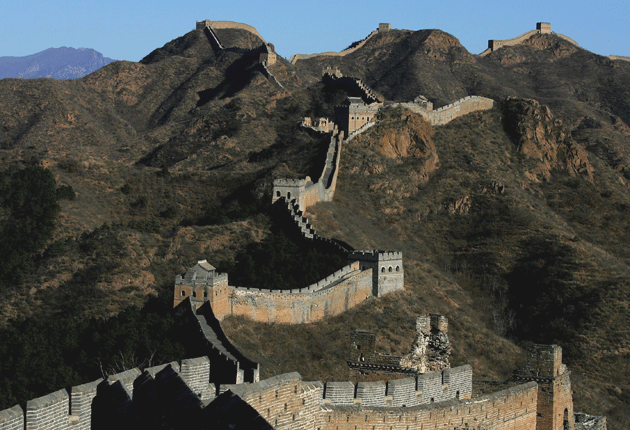China's Great Wall is longer than thought

The Great Wall of China is even greater than once thought.
A two-year government mapping study has uncovered new sections of the ancient Chinese monument that total about 180 miles, according to a report posted on the State Bureau of Surveying and Mapping website.
Using mapping technologies such as infrared range finders and GPS devices, experts discovered portions of the wall — concealed by hills, trenches and rivers — that stretch from Hu Mountain in northern Liaoning province to Jiayu Pass in western Gansu province, the official China Daily reported today.
The newly mapped parts of the wall were built during the Ming Dynasy (1368-1644) to protect against northern invaders and were submerged over time by sandstorms that moved across the arid region, the study said.
The additional parts mean the Great Wall — which Chinese emperors began constructing 2,000 years ago to keep out Monguls and invaders — spans about 3,900 miles through the northern part of the country.
The joint project, conducted by the State Administration of Cultural Heritage and State Bureau of Surveying and Mapping, will continue for another year in order to map sections of the wall built during the Qin (221 BC-206 BC) and Han (206 BC-9 AD) Dynasties, the report said.
Recent studies by Chinese archaeologists have shown that sections of the wall in Gansu are being reduced to "mounds of dirt" by sandstorms and may disappear entirely in 20 years. They blamed destructive farming methods in the 1950s that desertified large areas of northern China. In addition, portions of the wall in Gansu were made of packed earth, which proved less resilient that brick and stone used in much of the wall's construction.
China in recent years has begun restoring parts of the wall as well as trying to rein in commercial development on and around it.
The wall's modern sections around the Chinese capital date from the Ming Dynasty, including those restored since the Communist Party took power in 1949, and several areas — including the most popular, Badaling, just north of Beijing — draw hundreds of thousands of visitors each year.
Tourist encroachment also has been a problem in recent years, with state media saying that near Badaling almost every brick on a popular section of the wall has been carved with people's names or other graffiti.
Join our commenting forum
Join thought-provoking conversations, follow other Independent readers and see their replies
Comments
Bookmark popover
Removed from bookmarks